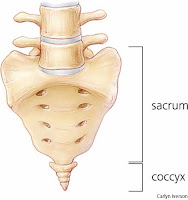Our very life depends on breathing. Joseph H.
Pilates stated that “it is tragically deplorable to contemplate that millions
and millions who have never learned to master the art of correct breathing”. It
is estimated that we complete 23,000 respiratory cycles a day and it effects
our overall body fluids and circulation. Every part of our body moves with
breathing. Chest and belly breathing has been linked to a number of health
issues.
During the later stages of pregnancy,
breathing may become difficult due to the baby’s pressure on the diaphragm. You
may find your breathing becoming labored at times, especially during physical
activity. As breast tissue increases,
posture may also inhibit proper breathing.
Getting a good breath is important during
pregnancy because your breathing assists the lymphatic and venous system to
produce a pressure gradient to return lymph and blood to the heart. Some of the
reasons for increased swelling during pregnancy may be due to improper
breathing.
It is important to practice good diaphragmatic
breathing during and after pregnancy. More importantly, after pregnancy, as our
muscles have adapted to the breathing performed during pregnancy.
Find a comfortable position with good posture,
shoulders back, lumbar spine supported in a chair. Or lying down at a > 45
degree angle to keep pressure off the inferior vena cava.
Place your hands on the bottom of your rib
cage under your beasts.
Start slowly by taking deeper and deeper breaths.
Do not try taking deep breaths right away or you may become dizzy or fatigued.
Begin to notice how your hands are moving; they
should be rising with each breath in and lowering with each breath out.
If your hands are not moving, try to take a
breath and focus on your hands to make them rise and fall with each breath.
During and after pregnancy, try to practice
breathing for at least 5 minutes a day.
Learning to breathe properly is better for you
and your baby’s health, can assist with sleep and swelling in the body. If there is
any pain with breathing, or you can’t seem to get your hands to rise and fall
with your breath, talk to your OB/GYN. There is also skilled
pregnancy/postpartum physical therapists that specialty trained in pregnancy for
breathing and rib problems.
Chaitow, Leon N.D.,
D.O. Breathing Patter Disorders, 2002 Churchill Livington




